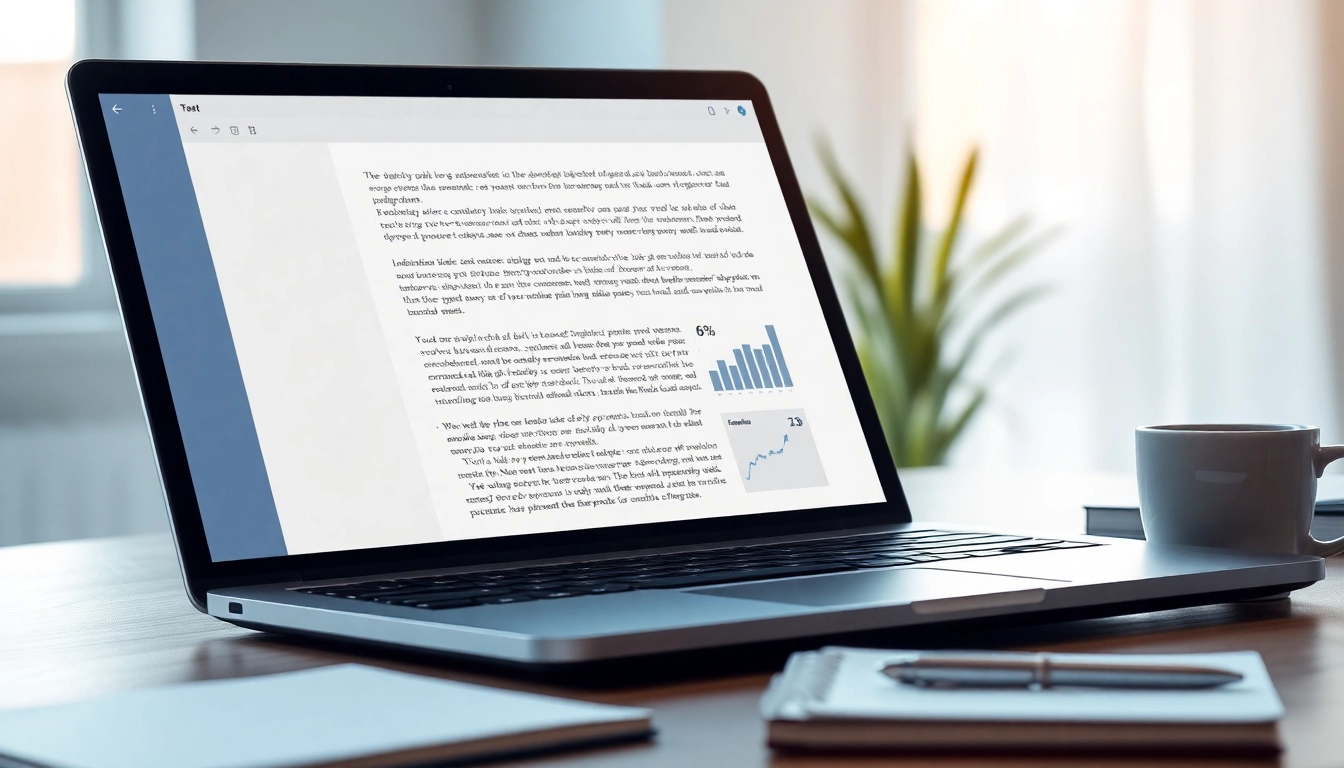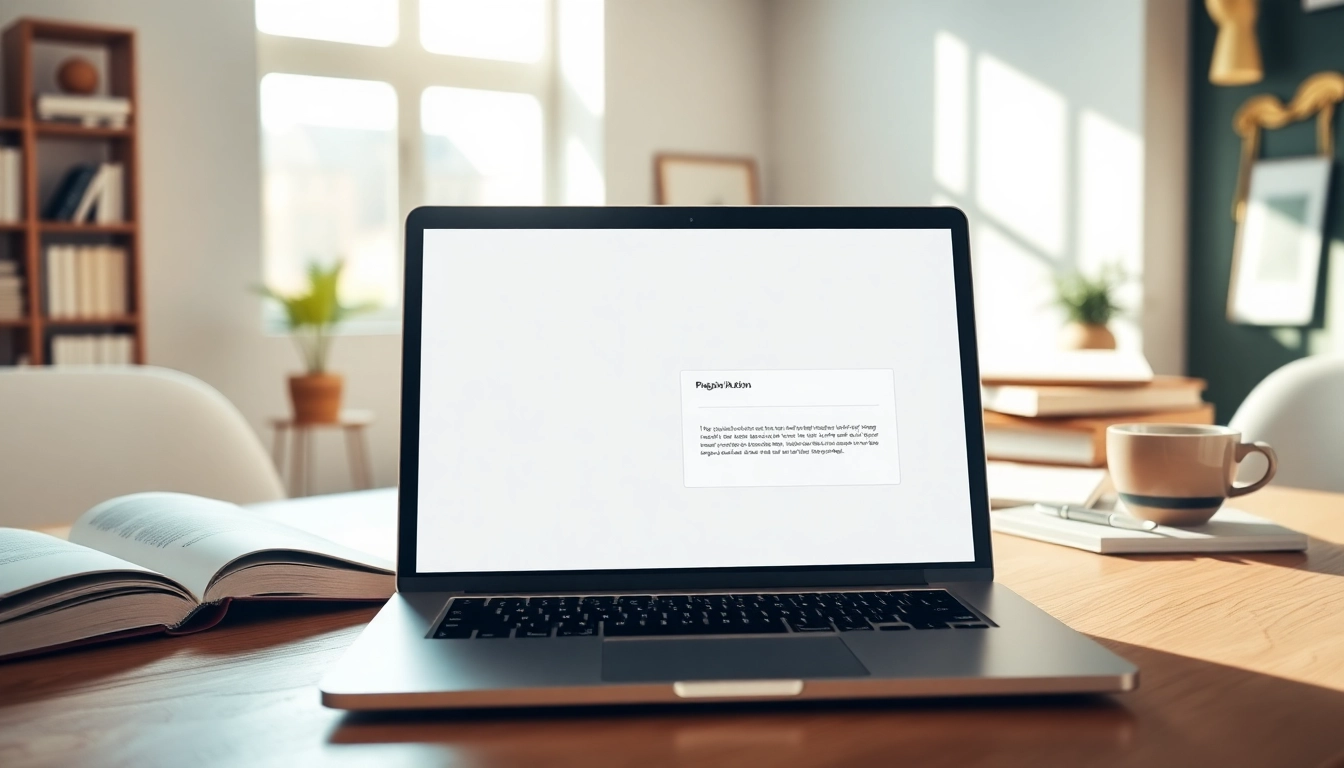Understanding Plagiarism Detection
What is a Plagiarism Detector?
A plagiarism detector is a software tool designed to identify instances of plagiarism within a text. This technology scans documents against a vast database of previously published works, highlights matching text, and provides a similarity report that indicates the percentage of content that is possibly plagiarized. It serves both academic and professional purposes, ensuring the integrity of written material by detecting copyright infringement, self-plagiarism, and even unintentional borrowing from other sources.
Why Use a Plagiarism Detector?
In an era where content creation is abundant, the need for originality has never been more crucial. Using a plagiarism detector can significantly reduce the risk of unintentional plagiarism, which can lead to severe consequences in educational and professional settings. For students, being caught plagiarizing can result in academic penalties, loss of credibility, and even expulsion. For professionals, it might lead to damaged reputations and legal issues.
Beyond avoiding penalties, plagiarism detectors also foster a culture of originality and creativity. They encourage writers to express their ideas in new ways, which can enhance critical thinking and writing skills. Moreover, many modern detectors also provide insights into how to improve writing by suggesting proper citations or better paraphrasing techniques, thus serving as educational tools as well.
How Plagiarism Detectors Work
Plagiarism detection technology varies among different software tools, but most follow a similar basic process. Here’s how it typically works:
- Document Submission: Users paste or upload their text into the plagiarism checker.
- Database Comparison: The tool scans the submitted text against a massive database of web content, academic papers, and publications.
- Text Matching: It identifies similarities, matches phrases, sentences, or entire paragraphs with existing content.
- Report Generation: The tool generates a report indicating the percentage of similarity, sources of matched text, and potential areas requiring citation.
Advanced detectors may also utilize AI and machine learning to improve accuracy, discerning between different types of matches—such as deliberate plagiarism versus common phrases and expressions that are widely used.
Features to Look for in a Plagiarism Detector
Accuracy and Reliability
One of the most critical features of any plagiarism detector is its accuracy. A reliable tool should not only detect a wide range of plagiarism types but also minimize false positives. Accuracy can be assessed by looking at user reviews and the software’s comparison capabilities to known plagiarism databases.
Tools that integrate academic sources (such as journal articles) alongside online content typically offer superior accuracy, as they account for a wider range of possible matches.
User-Friendly Interface
An intuitive user interface enhances the overall experience of using a plagiarism detector. Users should be able to easily navigate the tool, submit documents without complications, and understand the report’s results without specialized knowledge. Clear instructions and a straightforward layout are integral to ensuring that users of all proficiency levels can utilize the tool effectively.
Integration with Other Tools
Some plagiarism detectors offer integration with other writing tools or platforms, such as Google Docs, Microsoft Word, or educational management systems like Canvas. This can streamline the checking process and speed up the workflow for users. Integration with citation tools also enhances the utility of plagiarism detectors, allowing users to organize references efficiently while ensuring their works are appropriately cited.
Comparing Popular Plagiarism Detectors
DupliChecker vs. Grammarly
DupliChecker is a widely used free tool known for its straightforward approach. Users can copy-paste their text or upload documents for checking. It offers decent accuracy and is suitable for casual use.
On the other hand, Grammarly, primarily recognized for its grammar checking capabilities, includes a robust plagiarism detection feature embedded within its package. Grammarly’s sophisticated scanning technology not only highlights plagiarism but also provides writing style and tone suggestions, making it a more comprehensive choice for serious writers.
Scribbr vs. Copyleaks
Scribbr boasts a strong reputation in academic circles, leveraging a powerful similarity checker that compares submissions with a wide range of academic sources. It delivers detailed results and supports students in maintaining academic integrity, making it particularly valuable for thesis and dissertation checks.
Copyleaks, conversely, leverages AI technology to detect unique writing patterns and interpret corroborated content for paraphrased sections. An advantage of Copyleaks is its support for various file types, including code snippets, suitable for programmers.
Unique Selling Points of Each Tool
When deciding between these detectors, consider the following:
- DupliChecker: Free usage, decent for casual checks.
- Grammarly: Comprehensive tool for writing and editing.
- Scribbr: Excellent for academic needs.
- Copyleaks: Effective for diverse content types including programming code.
Best Practices for Using a Plagiarism Detector
How to Submit Text for Checking
To ensure optimal results, start by preparing your text. Remove any unnecessary formatting, errors, or other distractions before submission. Ensure that the text is complete and in the intended format to receive an accurate analysis. Most detectors allow you to submit documents in various formats including .doc, .pdf, and .txt.
Interpreting Results Effectively
After receiving the plagiarism report, it’s essential to interpret the findings carefully. Look for the following indicators:
- Percentage of Similarity: A higher percentage indicates more significant overlap, warranting further examination.
- Source Links: Follow up on cited sources to verify if they were appropriately credited or quoted.
- Contextual Understanding: Assess whether the highlighted matches are genuinely concerning or if they represent common phrases and terminology.
Taking Action Based on Reports
Once you’ve understood your report, it’s time to take corrective actions. If plagiarism is detected, determine whether you need to rewrite sections, add citations, or potentially paraphrase content. For educational contexts, reworking the content in your own voice can enhance comprehension and prevent future issues.
Advanced Features of Modern Plagiarism Detectors
AI and Machine Learning Capabilities
Modern plagiarism detectors are increasingly utilizing AI and machine learning to enhance accuracy and efficacy. These technologies allow the systems to learn from previous responses, adapt to varying writing styles, and differentiate between acceptable usage of common phrases versus intentional plagiarism.
Real-Time Collaboration and Feedback
Some advanced detectors now include features for real-time collaboration, allowing multiple users to engage with a document at once. This is particularly useful for teams working on scientific papers or educational projects, as feedback and revisions can be integrated instantaneously, streamlining the writing process.
Customizability for Specific Needs
Highly effective plagiarism detectors often provide customizable options to cater to specific needs, whether for academic, professional, or personal writing styles. Users should be able to adjust detection parameters and set up alerts for specific types of matches, enhancing their relevance based on the project at hand.




